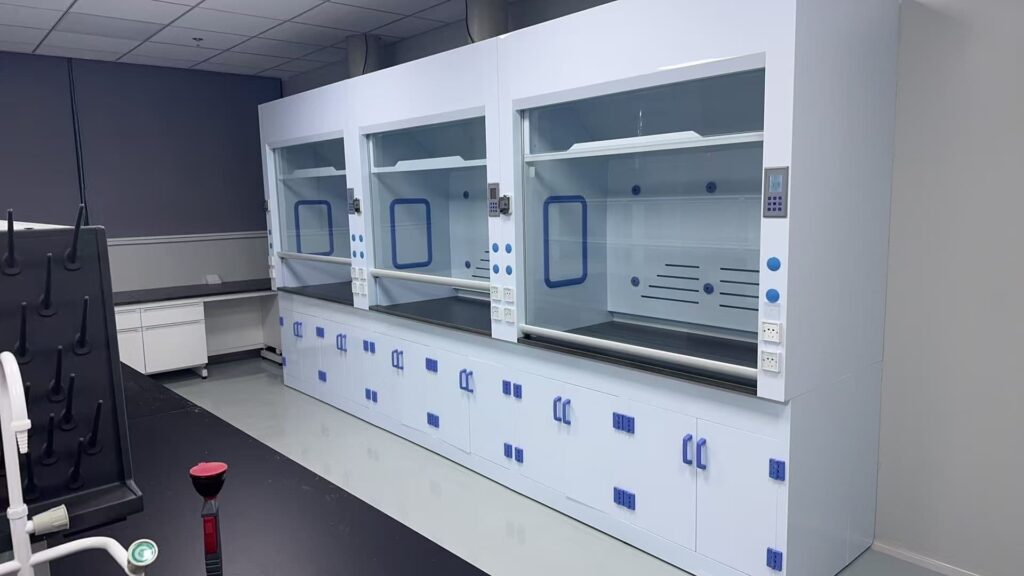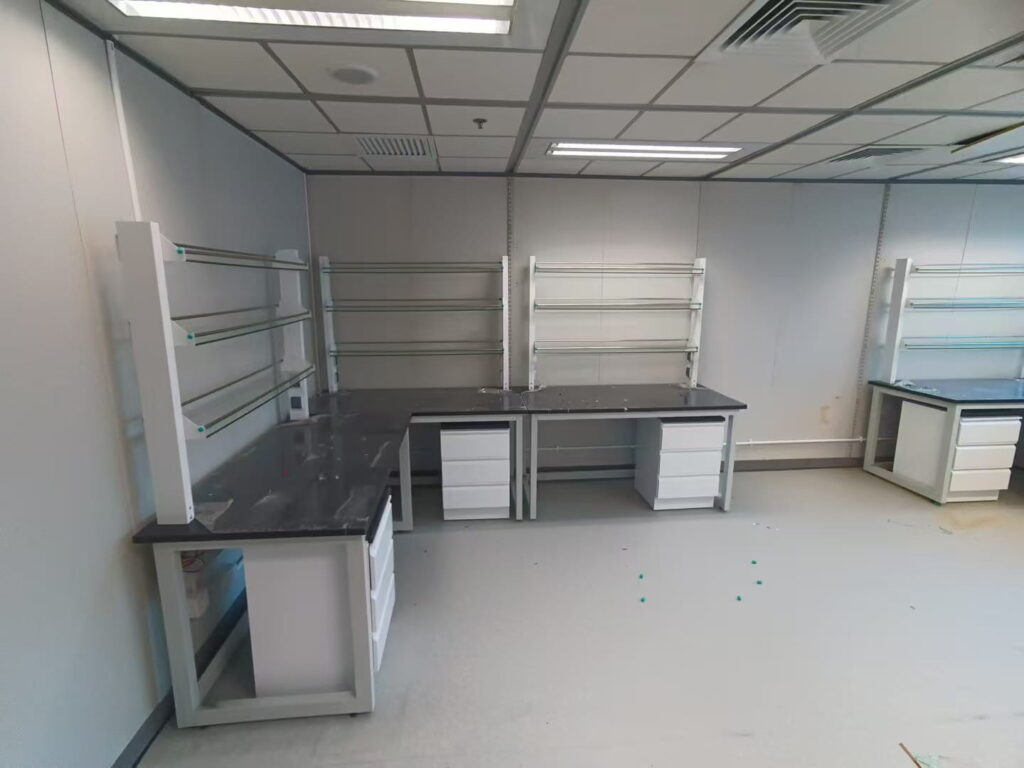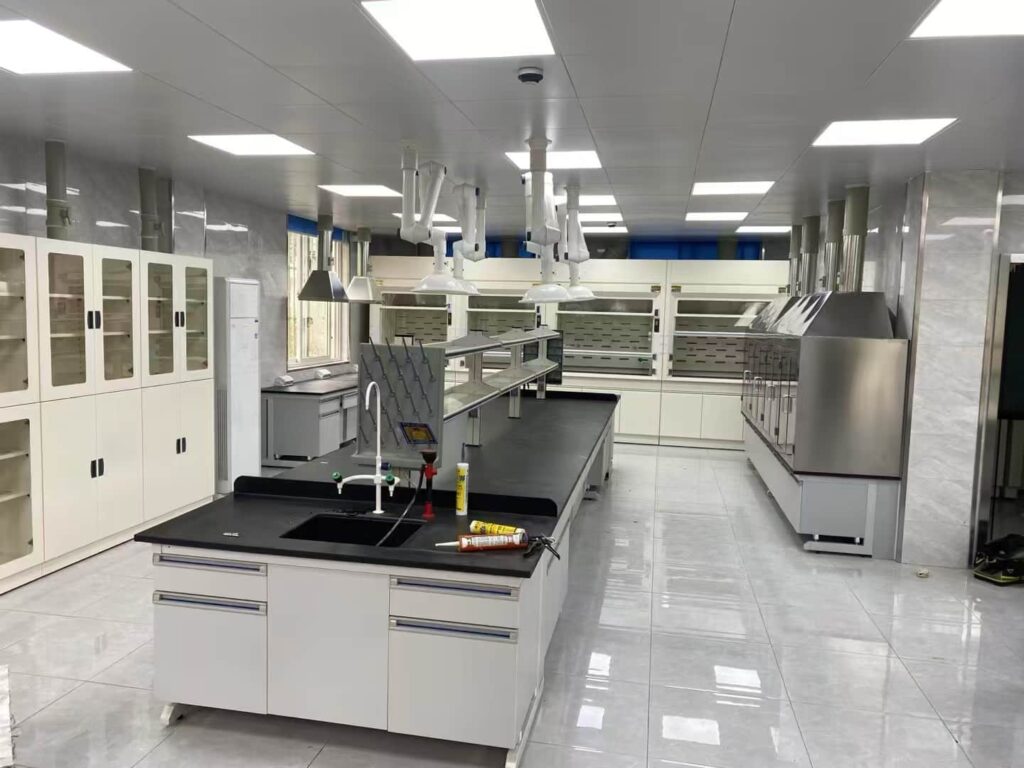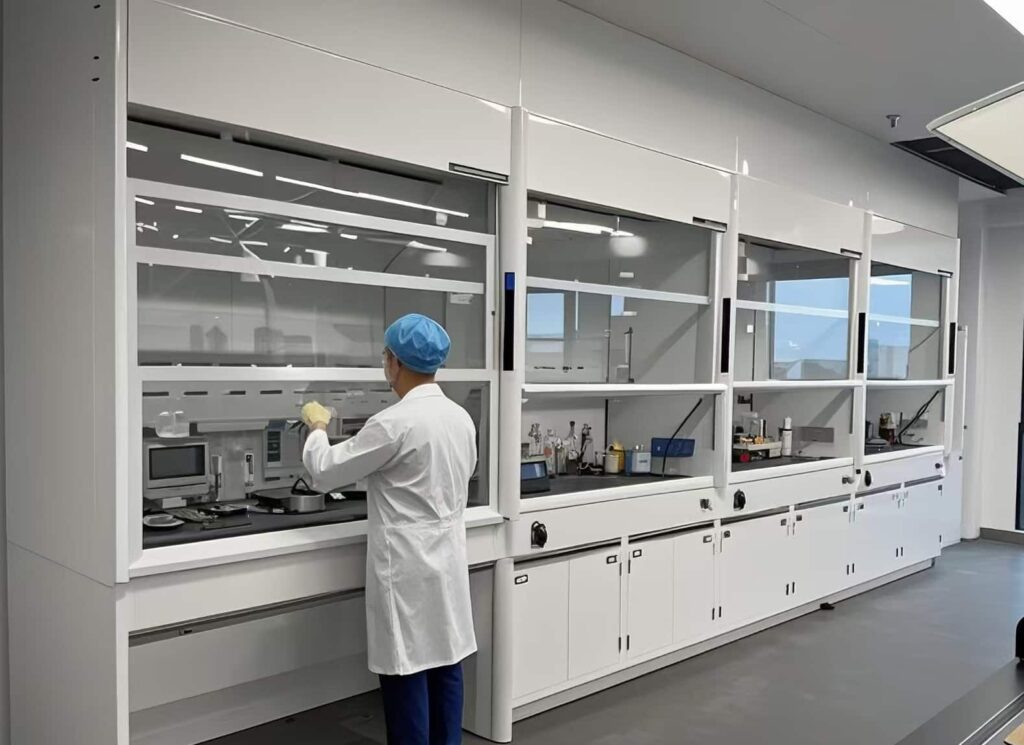Chemistry laboratories are constantly subjected to corrosive substances – concentrated acids, strong bases and organic solvents relentlessly erode lab workbenches. This corrosion not only compromises the integrity of experiments, leading to pitting of bench surfaces and contamination of samples, but also poses a major safety hazard in the form of structural failure of the lab workbenches. Replacement costs exceed $1,500 per year per laboratory workstation, and unplanned downtime disrupts research continuity.
As a result, the selection of chemically resistant lab benchtops materials shifts from an operational preference to a necessary risk mitigation measure. This guide examines five engineered lab bench surface solutions proven in 0ECD-accredited facilities, providing data-driven selection criteria designed to protect your lab from degradation while optimizing lifecycle costs.
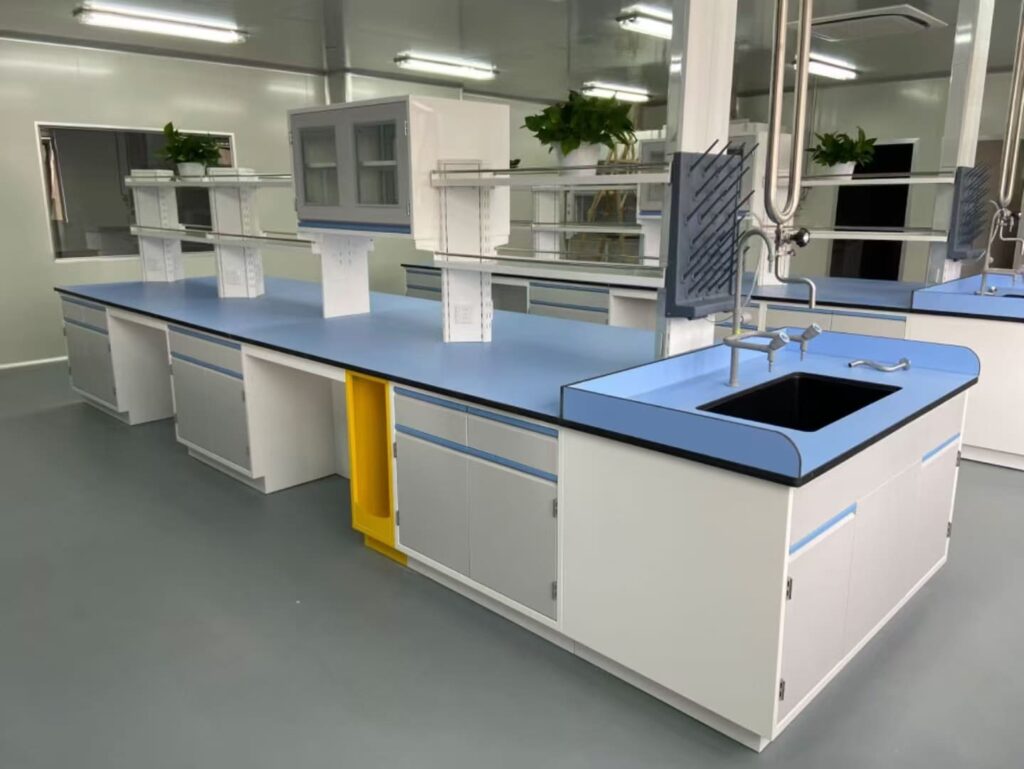
Section 1: The Dual Threats of Corrosion in Chemical Lab Workbenches
- Experimental Accuracy Risks
- Corrosion pits cause unstable instrument placement
- Residual chemicals contaminate samples
- Safety Hazards
- Surface cracks trigger chemical leaks
- Structural weakening leads to equipment toppling
- Operational Cost Escalation
- Frequent replacements increase procurement expenses
- Maintenance downtime disrupts research progress
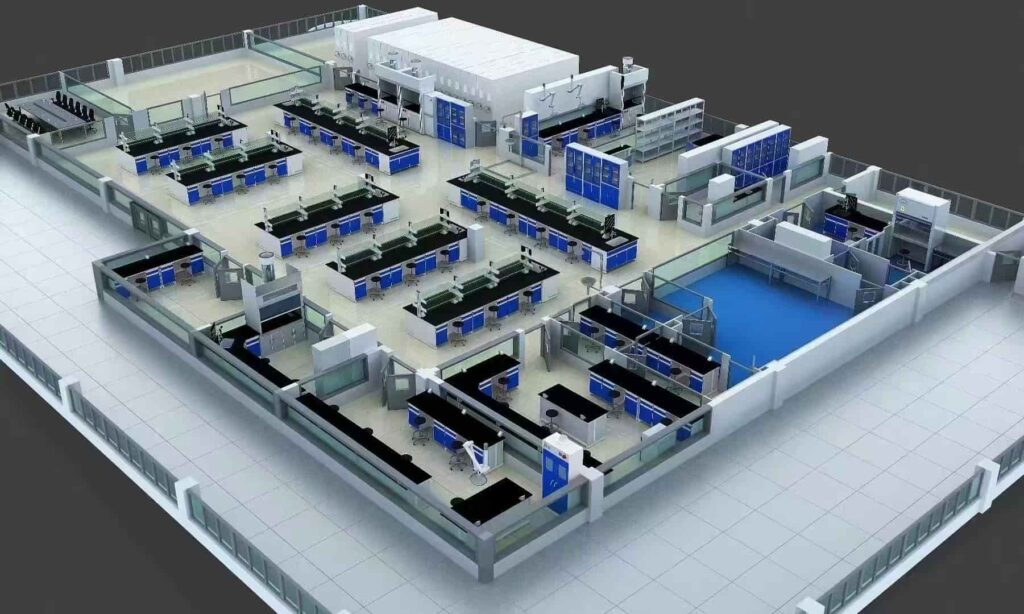
Section 2: Five Corrosion-Resistant Lab Workbenches Solutions
▶ Epoxy Resin Countertops: Comprehensive Protection
- Superior Chemical Resistance
✓ Withstands 98% sulfuric acid/40% hydrofluoric acid
✓ Organic solvent permeability <0.5% - Physical Performance
✓ Heat resistance to 800°C (short-term exposure)
✓ Impact strength >10 kJ/m² - Maintenance Advantages
✓ Repairable scratches up to 3mm depth
✓ Seamless construction prevents seepage
Ideal For: Organic synthesis labs / Strong acid/base operations
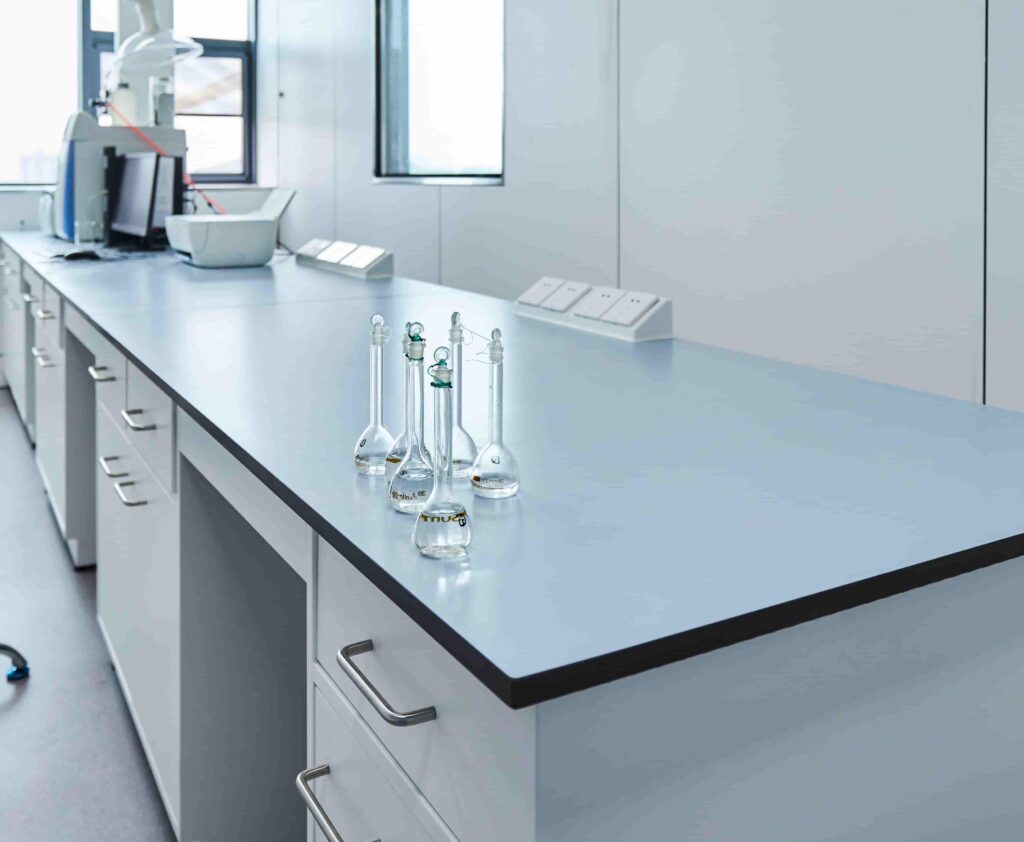
▶ Stainless Steel Surfaces: Corrosion Resistance Specialists
- Corrosion Defense
✓ 316L grade resists chloride ion corrosion
✓ Electropolished finish - Enhanced Functionality
✓ Load capacity ≥600 kg/m²
✓ >99.8% antimicrobial rate (ISO 22196) - Maintenance Efficiency
✓ 3-minute disinfection with alcohol wipes
✓ Joint-free design eliminates dirt traps
Ideal For: Biochemistry labs / Pathology labs

▶ Ceramic Work Surfaces: Extreme-Temperature Solution
- Maximum Endurance
✓ Sustained resistance to 1200°C
✓ Mohs hardness rating: 8 (Diamond=10) - Safety Assurance
✓ Zero combustion emissions (ASTM E84)
✓ Resists all acids/bases except HF - Longevity Features
✓ Service life >15 years
✓ Scratch-resistant maintenance-free surface
Ideal For: High-temperature reactions / Severe corrosion zones
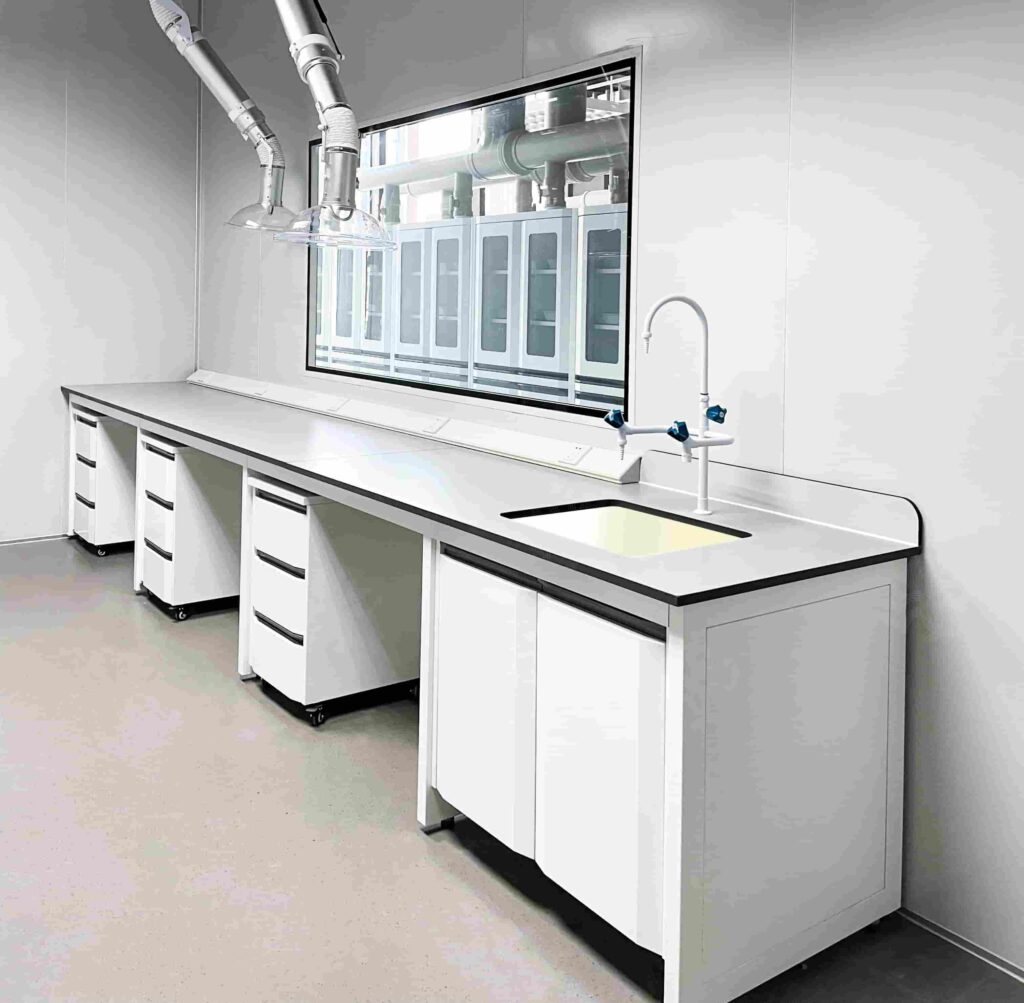
▶ Solid Core Physicochemical Board: Cost-Effective Option
- Balanced Protection
✓ Class A chemical resistance (ISO 2812)
✓ >4000 Taber abrasion cycles - Installation Benefits
✓ Lightweight: 38 kg/m² (1/3 steel weight)
✓ Customizable shapes - Maintenance Protocol
✓ Surface cleans with alcohol
✓ No periodic sealing required
Ideal For: Teaching labs / Routine chemical testing
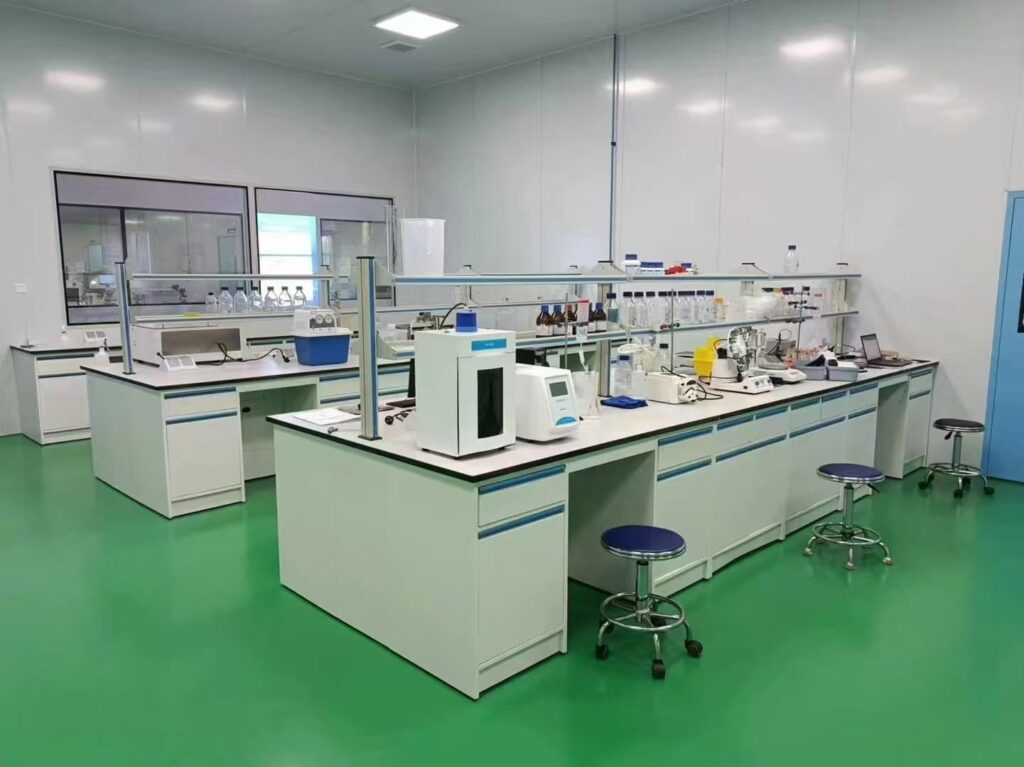
▶ Phenolic Resin Laminate: Heavy-Duty Protection
- Mechanical Excellence
✓ Flexural strength >90 MPa
✓ Water absorption <0.5% (JIS K6911) - Chemical Defense
✓ Grade 1 solvent resistance (highest)
✓ Continuous service at 150°C - Eco-Safety Compliance
✓ Zero formaldehyde emissions (EN717-1)
✓ >99% antibacterial rate
Ideal For: Electrochemical labs / Precision instrumentation
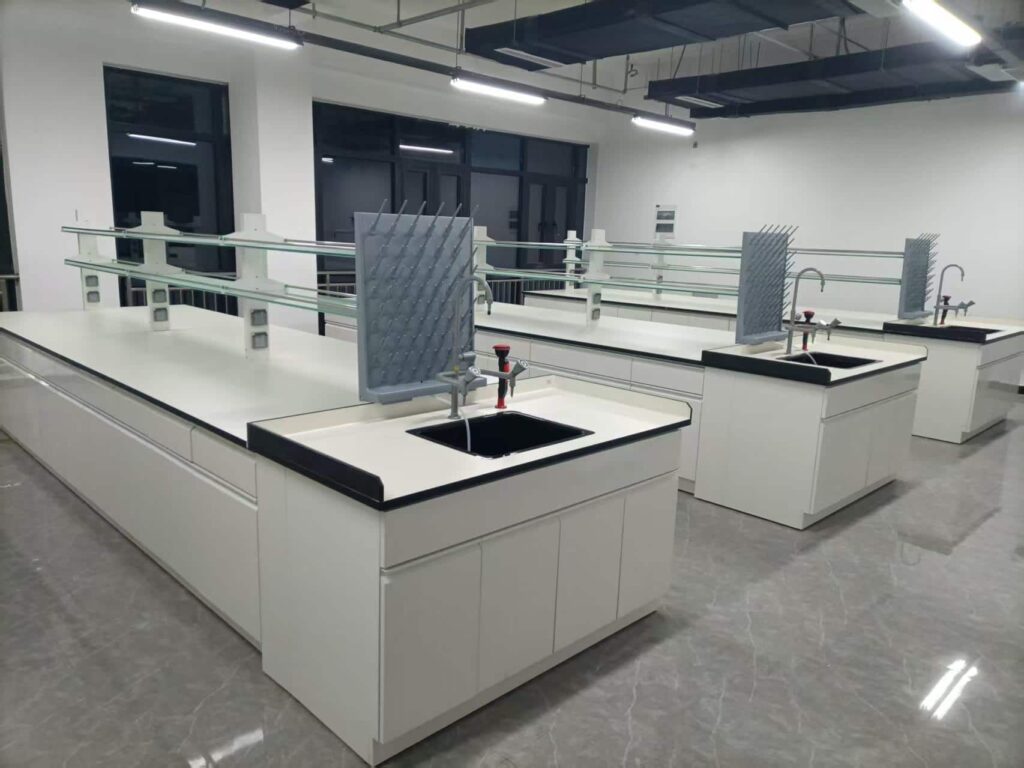
Section 3: Material Selection Matrix
| Application Requirement | Primary Material | Secondary Material | Avoid |
|---|---|---|---|
| High-temp (>300°C) | Ceramic | Epoxy resin | Solid core physicochemical board |
| Organic solvents | Phenolic laminate | Epoxy resin | Stainless steel |
| Concentrated acids/bases | Epoxy resin | Ceramic | Solid core physicochemical board |
| Precision instruments | Phenolic laminate | Stainless steel | Ceramic |
| Mobile workstations | Solid core physicochemical board | Stainless steel | Ceramic |
*Note: Limited resistance to concentrated nitric acid
**Caution: High hardness may damage instrument bases
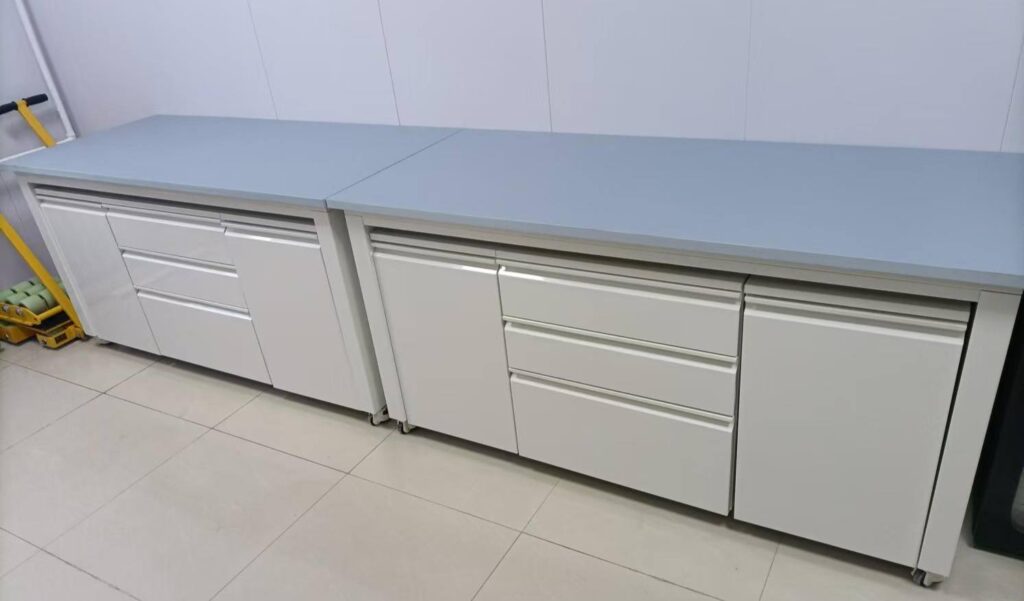
Section 4: Lifecycle maintenance protocols for laboratory Wprkbench tops
- Daily Care Principles
- Neutralize spills immediately (NaHCO₃ for acids/ CH₃COOH for bases)
- Use soft cloths with specialized cleaners – NO steel wool
- Monthly protective waxing (epoxy/solid phenolic surfaces)
- Longevity Enhancement

- Replacement Triggers
- Web-pattern cracks in epoxy
- Weld corrosion spreading on stainless steel
- >2mm substrate swelling in phenolic boards
Case Study: Pharmaceutical QC lab extended epoxy workbench lifespan from 3 to 8 years using quarterly wax protocol (2024 Lab Equipment White Paper)
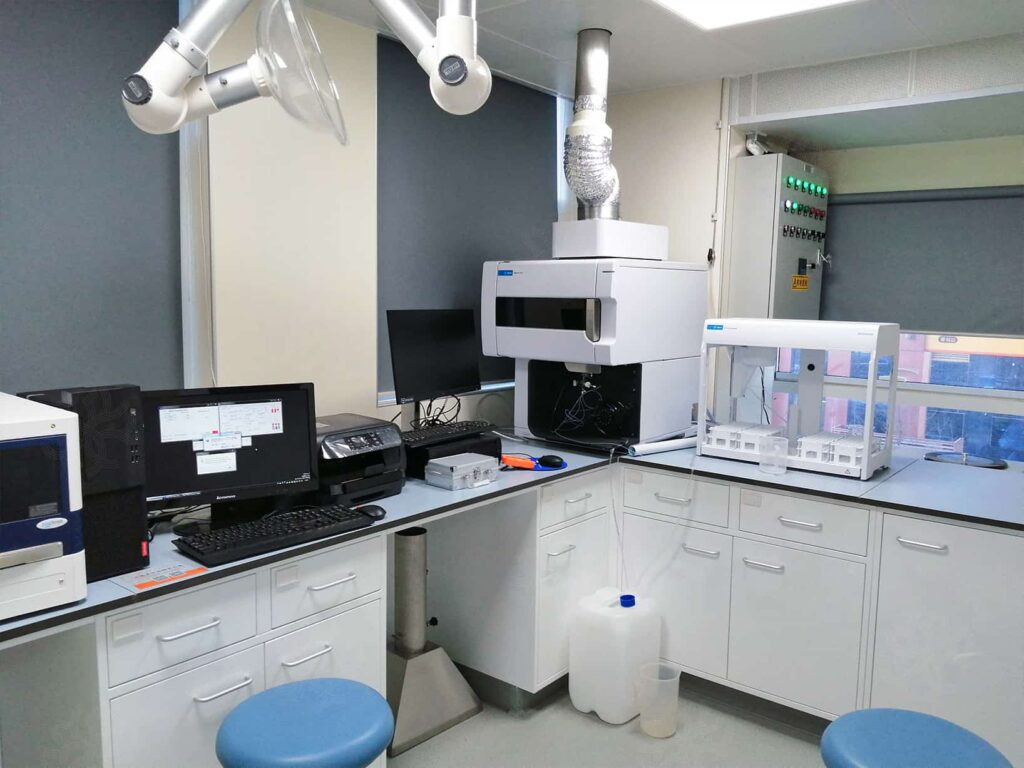
Chemical-Resistant: Protect Your Lab’s Foundation
Corrosive degradation isn’t merely a surface issue—it’s an existential threat to laboratory integrity. The five material solutions presented deliver proven defense mechanisms against chemical assault, but their efficacy hinges on strategic implementation. Remember:
- Prevention outweighs repair – Invest in chemically matched surfaces upfront
- Lifecycle > purchase price – Epoxy resin saves $12k per station over 10 years*
- Maintenance is non-negotiable – Quarterly protocols prevent catastrophic failure
Selecting workbench surfaces now determines your lab’s safety compliance, operational continuity, and budgetary control for the next decade. Consult NSF/ANSI 49 certification data and material safety datasheets (MSDs) to finalize evidence-based decisions—your research integrity depends on this critical infrastructure.

